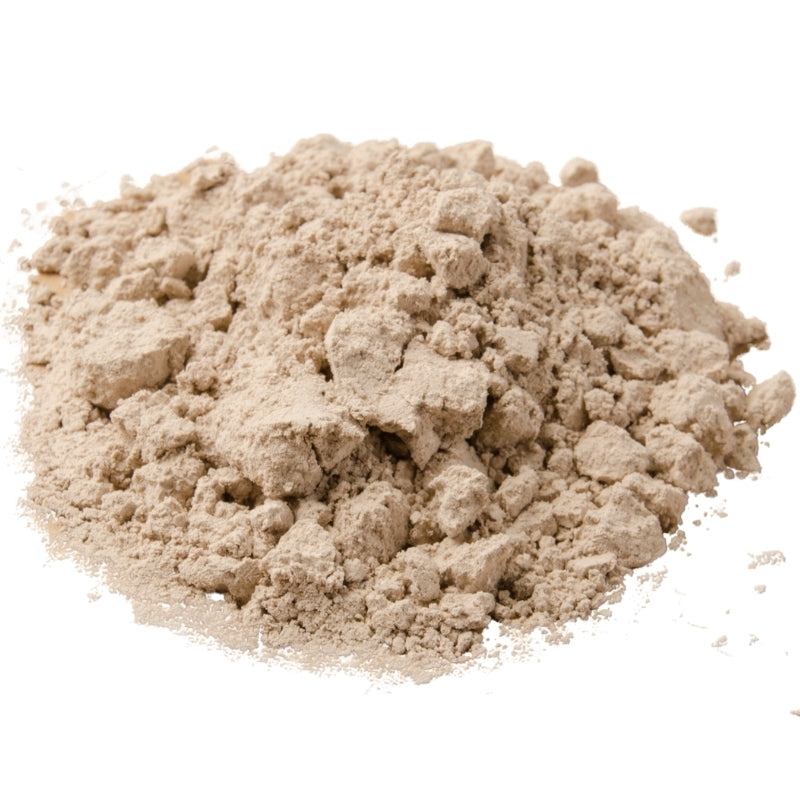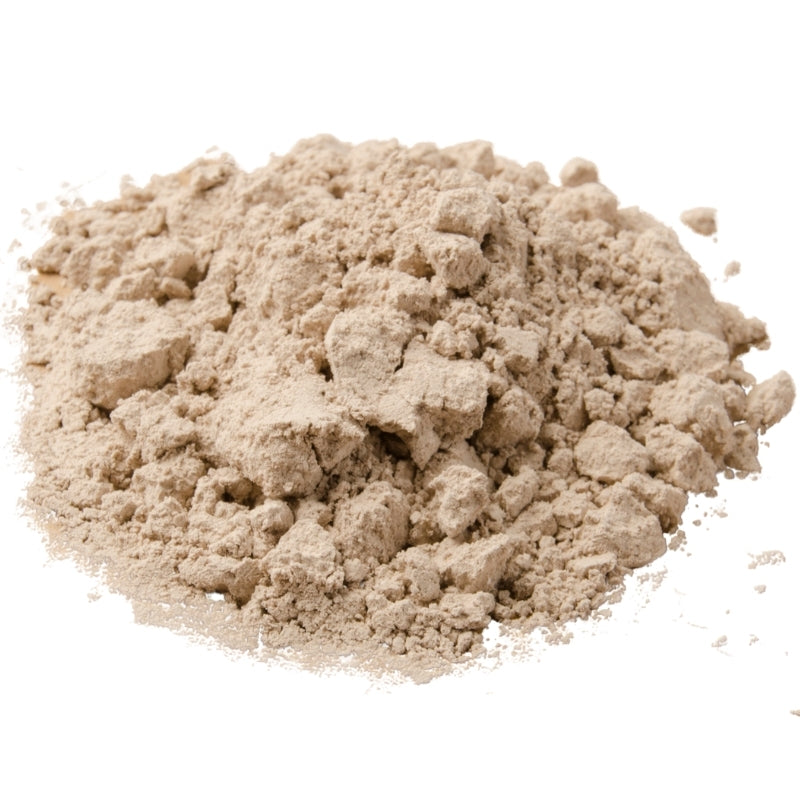
Everything You Need To Know About Diatomaceous Earth: Food-grade VS Non-Food-Grade
Cayla MandeanCan we be real with each other? A natural, non-toxic product that does it all is sometimes harder to find than your favourite hair scrunchie. Don't get me wrong, there are plenty of amazing natural products that serve multiple functions, but something that truly tackles health, hair, skin, and home care all in one go. That's like finding a unicorn… rare, magical, and a little too good to be true.
Or is it?
If you are familiar with natural ingredients like Rhassoul clay, Green bentonite clay, Bentonite healing clay, Green kaolin clay, Red kaolin clay, White/plain kaolin clay and Pink kaolin clay then you already know the magic that our mineral-rich earth can bring to your beauty and wellness routine. But what if I told you there's another natural wonder that takes versatility to a whole new level?
What is Diatomaceous Earth?
Not to get too "sciency" but... Diatomaceous Earth is simply… a soft, silica-rich powder derived from fossilised remains of hard-shelled microalgae known as diatoms. These diatoms have accumulated over millions of years and their accumulated remains formed the sedimentary rock known as diatomite. Diatomite is ground into a fine powder to create Diatomaceous Earth (DE).
The primary component of DE is amorphous silica (SiO₂), which is essential for various bodily functions and is widely used for its abrasive, absorbent, and detoxifying properties. Unlike crystalline silica, which can be hazardous when inhaled, amorphous silica is considered safe for human use when handled properly. This fine, powdery substance is versatile and a solution to many common concerns, from supporting gut health to keeping our homes pest-free.
Food-Grade vs. Non-Food-Grade Diatomaceous Earth
What is Food-Grade Diatomaceous Earth?
Food-grade diatomaceous earth is a naturally occurring, non-toxic substance primarily composed of amorphous silica, typically containing around 85-90% silica, along with various trace minerals such as calcium, magnesium, potassium, and iron. It is considered safe for consumption by humans and animals when used appropriately. Below are some of its uses and health benefits:
Health Benefits of Food-Grade Diatomaceous Earth:
- Detoxification and Gut Health: Diatomaceous earth is believed to support the digestive system by binding to and helping eliminate toxins, heavy metals, and other harmful substances from the body. This process may promote a healthier gut microbiome, supporting digestion and regular bowel movements.
- Supports Healthy Skin, Hair, and Nails: DE contains high levels of silica, an essential component in collagen synthesis. Collagen is necessary for maintaining healthy skin, hair, and nails, and regular consumption of food-grade DE may therefore contribute to stronger nails, thicker hair, and improved skin appearance.
- Joint and Bone Health: Silica is integral to the formation of bones, cartilage, and connective tissues. By supporting the synthesis of collagen and glycosaminoglycans, DE can contribute to improved joint mobility and bone strength, which may be especially beneficial in osteoporosis treatment plans.
- Natural Internal Cleanser: The mild abrasive properties of DE are believed to assist in cleansing the colon, promoting the removal of waste and toxins. This, in turn, can lead to enhanced nutrient absorption and a general improvement in overall digestive health.
How to Use Food-Grade Diatomaceous Earth:
- Toothpaste and Oral Care: DE's mild abrasiveness helps to clean teeth, remove plaque, and whitens without damaging enamel. Which is why it's a common ingredient in natural toothpaste formulations.
- Skin Care: Due to its exfoliating properties, DE is used in DIY skin scrubs, exfoliators, and polishes. It helps to remove dead skin cells and promote a smoother and brighter complexion.
- Pest Control: Food-grade DE is effective in controlling internal and external parasites, such as fleas on pets. It can also be used around the home to combat bed bugs, ants, and cockroaches.
- Immune Support: Though limited, some studies suggest that silica may help boost immune function by supporting overall tissue health. DE is thought to contribute to the overall resilience of the body against illnesses.
To Consume:
- Take one teaspoon of DE (food grade) with water or juice once a day. Preferably on an empty stomach an hour or two before or after eating.
- DE is a very fine dry powder; so it's important to follow each dosage with plenty of liquids to maintain your body's hydration levels.
- The dosage can be increased after a few weeks, to two doses, one teaspoon taken in the morning and one at night.
- It's better not to use DE continuously for very long periods of time, but to rather give your body breaks. Based on anecdotal use, two weeks on, two weeks off, seems to work for a lot of people.
- DE doesn't dissolve in water and it's normal to see some gritty residue, which is why some people prefer to mix into yogurts or smoothies.
What is Non-Food-Grade Diatomaceous Earth (DE)?
Non-food-grade diatomaceous earth is used primarily in industrial, agricultural, and pest control applications. This type of DE may contain higher levels of crystalline silica; which is not safe for humans or animals to ingest in large quantities. Therefore, it's always best to stick to certified food-grade versions if intended for consumption. But if you are just looking to use the DE in and around your home, or for any other external/topical uses, the non-food-grade version is perfectly suitable/safe and is also a bit more affordable.
How to Use Non-Food-Grade Diatomaceous Earth:
- Natural Pest Control: Non-food-grade DE is a natural, non-toxic pest control agent. Its sharp microscopic particles penetrate the exoskeletons of insects, dehydrating and killing them without using harmful chemicals. It is effective against pests like ants, fleas, cockroaches, and bedbugs.
- Household Deodoriser and Absorbent: Due to its high absorbent capacity, DE is commonly used to control odours in places like refrigerators, carpets, and litter boxes. It can also absorb moisture and spills, making it a nose-saviour in humid environments.
- Gardening and Agriculture: In gardens, DE is sprinkled around plants to protect them from pests without harming beneficial insects. It also improves soil quality by providing plants with essential silica, which supports healthy growth.
- Filtration and Industrial Uses: DE is extensively used in industrial filtration processes, such as in pool filters and water purification systems. It is also used as an anti-caking agent and other applications requiring filtration.
How to Use Diatomaceous Earth in Natural Hair and Skincare Products
- Exfoliating Scrubs: DE's fine, abrasive texture makes it an effective natural exfoliant. It is commonly included in facial and body scrubs to remove dead skin cells and promote cell renewal, leading to a glowing complexion.
- Dry Shampoo: DE's absorbent properties make it an excellent ingredient in dry shampoos. It helps absorb excess oils from the scalp and refreshes hair without relying on synthetic chemicals or aerosols. (Keep reading for a lovely DIY shampoo bar recipe)
- Face Masks and Cleansers: When added to face masks, DE can help detoxify the skin, drawing out impurities and improving overall skin tone. It is particularly beneficial for those with acne-prone or oily skin.
- Deodorants and Foot Powders: DE is widely used in natural deodorants and foot powders due to its moisture-absorbing and odour-neutralising properties. It helps keep skin dry and fresh throughout the day.
How to Use Diatomaceous Earth (DE) Safely
While DE is generally safe, it is essential to use it responsibly:
- Always choose food-grade DE for internal consumption.
- Avoid inhaling DE powder, as its fine particles can irritate the lungs.
- Store DE in a dry, sealed container to prevent moisture absorption.
You could also make our DE Shampoo bar. It is safely formulated to cleanse, nourish, and strengthen hair while being gentle on the scalp. This bar offers a balance of deep cleansing, scalp care, and hydration.














